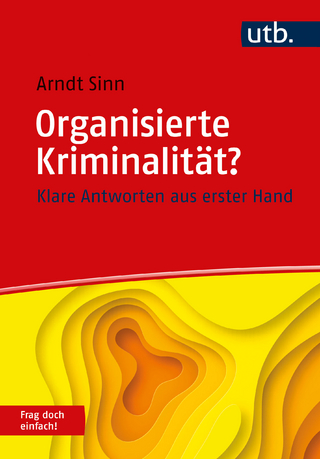
Visual Criminology
Routledge (Verlag)
978-0-367-41777-2 (ISBN)
The collection visually connects theory and practice by highlighting the work of criminologists who have embraced the visual turn. Contributors explore the use of cognitive maps, concept and mind maps, life history calendars, CCTV, life plots, GIS and hot spot research, policy graphs, visual abstracts and research summaries,and other visual tools in the context of criminology. Approaches building on visual sociology are also featured, including a discussion of developments in documentary photography and film, visual ethnography, and sensory phenomenology. The book is organized thematically, with each chapter following logically upon the last, introducing readers to a variety of visual approaches and their application in criminology.
The goals of this collected volume are three-fold. The first is to highlight how the visual has been used in criminology historically to present data, contest meaning and complicate social control, and make more transparent the research process. The second is to work toward some sort of definitional consistency. While a worthy endeavor, this remains elusive given the assortment of uses and varying traditions from which visual criminology has emerged. The third is to try to think clearly about the role of humility. This means a willingness to acknowledge an epistemological framework and note the variety of limitations associated with trying to understand in deep and meaningful ways. For visual criminology specifically, it involves the recognition that part of the power of images (whatever their construction), comes from whether we think they are beautiful or whether and/or to what extent they disrupt our understanding in one way or another.
This interdisciplinary book will be of interest to criminologists, sociologists, visual ethnographers, historians and those engaged with media studies. It is a valuable supplementary text for courses in introductory criminology and criminal justice, criminological theory, research methods, and other upper-level and senior capstone courses.
Johannes Wheeldon is Executive Director of SPEAK, an organization dedicated to expanding debate and dialogue. He has more than 20 years’ experience working in criminal justice including teaching in prisons, working with those deemed high risk to re-offend, and designing, conducting, and managing justice reform projects around the world. He has worked with the American Bar Association, the Canadian International Development Agency, the Open Society Foundations, and the World Bank. He has published 5 books and more than 30 peer review papers on aspects of criminal justice, restorative justice, organizational change, and evaluation. He is an Adjunct Professor at Norwich University.
Visualizing Criminology; 1. The Visual Turn in Criminology; 2. Criminological Theory and Criminal Justice Practice: A Visual History; 3. Mapping Criminology and Criminal Justice through the Oral History Criminology Project; Diagrams and Data; 4. Mapping Criminological Thinking: Incorporating the Visual in the Classroom; 5. Visual Data Collection in Justice Research: From Photos and Film to Maps and Meaning; 6. Visualizing Criminal Careers with the Life History Plot; Understanding and Contesting Images; 7. Visualizing the Value(s) of Critical Criminology: Definitions, Debates, and Dialogue; 8. The Critical Foundations of Visual Criminology; 9. Using a Visual Criminology Facebook Group in Blended Instruction;; Visual Analysis and Policy Translation; 10. GIS, Hotspots and Visualizing Crime Prevention; 11. Rethinking Victimization: Visualizing Policy Based on Disorganization and Self-Control; 12. The Value of Data Visualization for Translational Criminology; 13. Visual Criminology: Caveats, Conclusions, and New Directions
| Erscheinungsdatum | 01.10.2021 |
|---|---|
| Zusatzinfo | 9 Tables, color; 86 Line drawings, color; 23 Halftones, color; 109 Illustrations, color |
| Verlagsort | London |
| Sprache | englisch |
| Maße | 178 x 254 mm |
| Gewicht | 839 g |
| Themenwelt | Geisteswissenschaften ► Geschichte |
| Recht / Steuern ► Strafrecht ► Kriminologie | |
| Sozialwissenschaften ► Ethnologie | |
| Sozialwissenschaften ► Kommunikation / Medien ► Medienwissenschaft | |
| Sozialwissenschaften ► Soziologie | |
| ISBN-10 | 0-367-41777-4 / 0367417774 |
| ISBN-13 | 978-0-367-41777-2 / 9780367417772 |
| Zustand | Neuware |
| Haben Sie eine Frage zum Produkt? |
aus dem Bereich


